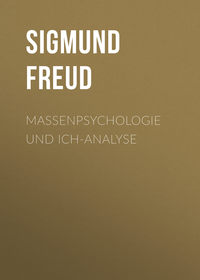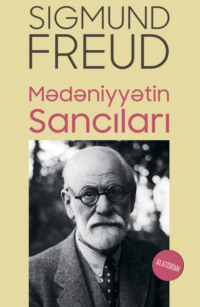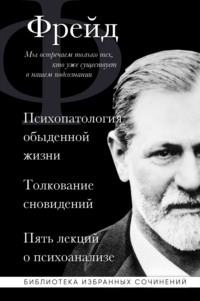 полная версия
полная версияDream Psychology: Psychoanalysis for Beginners
We are now in the best position to complete our psychological construction, which has been interrupted by the introduction of the two systems, Unc. and Forec. We have still, however, ample reason for giving further consideration to the wish as the sole psychic motive power in the dream. We have explained that the reason why the dream is in every case a wish realization is because it is a product of the Unc., which knows no other aim in its activity but the fulfillment of wishes, and which has no other forces at its disposal but wish-feelings. If we avail ourselves for a moment longer of the right to elaborate from the dream interpretation such far-reaching psychological speculations, we are in duty bound to demonstrate that we are thereby bringing the dream into a relationship which may also comprise other psychic structures. If there exists a system of the Unc. – or something sufficiently analogous to it for the purpose of our discussion – the dream cannot be its sole manifestation; every dream may be a wish-fulfillment, but there must be other forms of abnormal wish-fulfillment beside this of dreams. Indeed, the theory of all psychoneurotic symptoms culminates in the proposition that they too must be taken as wish-fulfillments of the unconscious. Our explanation makes the dream only the first member of a group most important for the psychiatrist, an understanding of which means the solution of the purely psychological part of the psychiatric problem. But other members of this group of wish-fulfillments, e. g., the hysterical symptoms, evince one essential quality which I have so far failed to find in the dream. Thus, from the investigations frequently referred to in this treatise, I know that the formation of an hysterical symptom necessitates the combination of both streams of our psychic life. The symptom is not merely the expression of a realized unconscious wish, but it must be joined by another wish from the foreconscious which is fulfilled by the same symptom; so that the symptom is at least doubly determined, once by each one of the conflicting systems. Just as in the dream, there is no limit to further over-determination. The determination not derived from the Unc. is, as far as I can see, invariably a stream of thought in reaction against the unconscious wish, e. g., a self-punishment. Hence I may say, in general, that an hysterical symptom originates only where two contrasting wish-fulfillments, having their source in different psychic systems, are able to combine in one expression. (Compare my latest formulation of the origin of the hysterical symptoms in a treatise published by the Zeitschrift für Sexualwissenschaft, by Hirschfeld and others, 1908). Examples on this point would prove of little value, as nothing but a complete unveiling of the complication in question would carry conviction. I therefore content myself with the mere assertion, and will cite an example, not for conviction but for explication. The hysterical vomiting of a female patient proved, on the one hand, to be the realization of an unconscious fancy from the time of puberty, that she might be continuously pregnant and have a multitude of children, and this was subsequently united with the wish that she might have them from as many men as possible. Against this immoderate wish there arose a powerful defensive impulse. But as the vomiting might spoil the patient's figure and beauty, so that she would not find favor in the eyes of mankind, the symptom was therefore in keeping with her punitive trend of thought, and, being thus admissible from both sides, it was allowed to become a reality. This is the same manner of consenting to a wish-fulfillment which the queen of the Parthians chose for the triumvir Crassus. Believing that he had undertaken the campaign out of greed for gold, she caused molten gold to be poured into the throat of the corpse. "Now hast thou what thou hast longed for." As yet we know of the dream only that it expresses a wish-fulfillment of the unconscious; and apparently the dominating foreconscious permits this only after it has subjected the wish to some distortions. We are really in no position to demonstrate regularly a stream of thought antagonistic to the dream-wish which is realized in the dream as in its counterpart. Only now and then have we found in the dream traces of reaction formations, as, for instance, the tenderness toward friend R. in the "uncle dream." But the contribution from the foreconscious, which is missing here, may be found in another place. While the dominating system has withdrawn on the wish to sleep, the dream may bring to expression with manifold distortions a wish from the Unc., and realize this wish by producing the necessary changes of energy in the psychic apparatus, and may finally retain it through the entire duration of sleep.22
This persistent wish to sleep on the part of the foreconscious in general facilitates the formation of the dream. Let us refer to the dream of the father who, by the gleam of light from the death chamber, was brought to the conclusion that the body has been set on fire. We have shown that one of the psychic forces decisive in causing the father to form this conclusion, instead of being awakened by the gleam of light, was the wish to prolong the life of the child seen in the dream by one moment. Other wishes proceeding from the repression probably escape us, because we are unable to analyze this dream. But as a second motive power of the dream we may mention the father's desire to sleep, for, like the life of the child, the sleep of the father is prolonged for a moment by the dream. The underlying motive is: "Let the dream go on, otherwise I must wake up." As in this dream so also in all other dreams, the wish to sleep lends its support to the unconscious wish. We reported dreams which were apparently dreams of convenience. But, properly speaking, all dreams may claim this designation. The efficacy of the wish to continue to sleep is the most easily recognized in the waking dreams, which so transform the objective sensory stimulus as to render it compatible with the continuance of sleep; they interweave this stimulus with the dream in order to rob it of any claims it might make as a warning to the outer world. But this wish to continue to sleep must also participate in the formation of all other dreams which may disturb the sleeping state from within only. "Now, then, sleep on; why, it's but a dream"; this is in many cases the suggestion of the Forec. to consciousness when the dream goes too far; and this also describes in a general way the attitude of our dominating psychic activity toward dreaming, though the thought remains tacit. I must draw the conclusion that throughout our entire sleeping state we are just as certain that we are dreaming as we are certain that we are sleeping. We are compelled to disregard the objection urged against this conclusion that our consciousness is never directed to a knowledge of the former, and that it is directed to a knowledge of the latter only on special occasions when the censor is unexpectedly surprised. Against this objection we may say that there are persons who are entirely conscious of their sleeping and dreaming, and who are apparently endowed with the conscious faculty of guiding their dream life. Such a dreamer, when dissatisfied with the course taken by the dream, breaks it off without awakening, and begins it anew in order to continue it with a different turn, like the popular author who, on request, gives a happier ending to his play. Or, at another time, if placed by the dream in a sexually exciting situation, he thinks in his sleep: "I do not care to continue this dream and exhaust myself by a pollution; I prefer to defer it in favor of a real situation."
VII
THE FUNCTION OF THE DREAM
Since we know that the foreconscious is suspended during the night by the wish to sleep, we can proceed to an intelligent investigation of the dream process. But let us first sum up the knowledge of this process already gained. We have shown that the waking activity leaves day remnants from which the sum of energy cannot be entirely removed; or the waking activity revives during the day one of the unconscious wishes; or both conditions occur simultaneously; we have already discovered the many variations that may take place. The unconscious wish has already made its way to the day remnants, either during the day or at any rate with the beginning of sleep, and has effected a transference to it. This produces a wish transferred to the recent material, or the suppressed recent wish comes to life again through a reinforcement from the unconscious. This wish now endeavors to make its way to consciousness on the normal path of the mental processes through the foreconscious, to which indeed it belongs through one of its constituent elements. It is confronted, however, by the censor, which is still active, and to the influence of which it now succumbs. It now takes on the distortion for which the way has already been paved by its transference to the recent material. Thus far it is in the way of becoming something resembling an obsession, delusion, or the like, i. e. a thought reinforced by a transference and distorted in expression by the censor. But its further progress is now checked through the dormant state of the foreconscious; this system has apparently protected itself against invasion by diminishing its excitements. The dream process, therefore, takes the regressive course, which has just been opened by the peculiarity of the sleeping state, and thereby follows the attraction exerted on it by the memory groups, which themselves exist in part only as visual energy not yet translated into terms of the later systems. On its way to regression the dream takes on the form of dramatization. The subject of compression will be discussed later. The dream process has now terminated the second part of its repeatedly impeded course. The first part expended itself progressively from the unconscious scenes or phantasies to the foreconscious, while the second part gravitates from the advent of the censor back to the perceptions. But when the dream process becomes a content of perception it has, so to speak, eluded the obstacle set up in the Forec. by the censor and by the sleeping state. It succeeds in drawing attention to itself and in being noticed by consciousness. For consciousness, which means to us a sensory organ for the reception of psychic qualities, may receive stimuli from two sources – first, from the periphery of the entire apparatus, viz. from the perception system, and, secondly, from the pleasure and pain stimuli, which constitute the sole psychic quality produced in the transformation of energy within the apparatus. All other processes in the system, even those in the foreconscious, are devoid of any psychic quality, and are therefore not objects of consciousness inasmuch as they do not furnish pleasure or pain for perception. We shall have to assume that those liberations of pleasure and pain automatically regulate the outlet of the occupation processes. But in order to make possible more delicate functions, it was later found necessary to render the course of the presentations more independent of the manifestations of pain. To accomplish this the Forec. system needed some qualities of its own which could attract consciousness, and most probably received them through the connection of the foreconscious processes with the memory system of the signs of speech, which is not devoid of qualities. Through the qualities of this system, consciousness, which had hitherto been a sensory organ only for the perceptions, now becomes also a sensory organ for a part of our mental processes. Thus we have now, as it were, two sensory surfaces, one directed to perceptions and the other to the foreconscious mental processes.
I must assume that the sensory surface of consciousness devoted to the Forec. is rendered less excitable by sleep than that directed to the P-systems. The giving up of interest for the nocturnal mental processes is indeed purposeful. Nothing is to disturb the mind; the Forec. wants to sleep. But once the dream becomes a perception, it is then capable of exciting consciousness through the qualities thus gained. The sensory stimulus accomplishes what it was really destined for, namely, it directs a part of the energy at the disposal of the Forec. in the form of attention upon the stimulant. We must, therefore, admit that the dream invariably awakens us, that is, it puts into activity a part of the dormant force of the Forec. This force imparts to the dream that influence which we have designated as secondary elaboration for the sake of connection and comprehensibility. This means that the dream is treated by it like any other content of perception; it is subjected to the same ideas of expectation, as far at least as the material admits. As far as the direction is concerned in this third part of the dream, it may be said that here again the movement is progressive.
To avoid misunderstanding, it will not be amiss to say a few words about the temporal peculiarities of these dream processes. In a very interesting discussion, apparently suggested by Maury's puzzling guillotine dream, Goblet tries to demonstrate that the dream requires no other time than the transition period between sleeping and awakening. The awakening requires time, as the dream takes place during that period. One is inclined to believe that the final picture of the dream is so strong that it forces the dreamer to awaken; but, as a matter of fact, this picture is strong only because the dreamer is already very near awakening when it appears. "Un rêve c'est un réveil qui commence."
It has already been emphasized by Dugas that Goblet was forced to repudiate many facts in order to generalize his theory. There are, moreover, dreams from which we do not awaken, e. g., some dreams in which we dream that we dream. From our knowledge of the dream-work, we can by no means admit that it extends only over the period of awakening. On the contrary, we must consider it probable that the first part of the dream-work begins during the day when we are still under the domination of the foreconscious. The second phase of the dream-work, viz. the modification through the censor, the attraction by the unconscious scenes, and the penetration to perception must continue throughout the night. And we are probably always right when we assert that we feel as though we had been dreaming the whole night, although we cannot say what. I do not, however, think it necessary to assume that, up to the time of becoming conscious, the dream processes really follow the temporal sequence which we have described, viz. that there is first the transferred dream-wish, then the distortion of the censor, and consequently the change of direction to regression, and so on. We were forced to form such a succession for the sake of description; in reality, however, it is much rather a matter of simultaneously trying this path and that, and of emotions fluctuating to and fro, until finally, owing to the most expedient distribution, one particular grouping is secured which remains. From certain personal experiences, I am myself inclined to believe that the dream-work often requires more than one day and one night to produce its result; if this be true, the extraordinary art manifested in the construction of the dream loses all its marvels. In my opinion, even the regard for comprehensibility as an occurrence of perception may take effect before the dream attracts consciousness to itself. To be sure, from now on the process is accelerated, as the dream is henceforth subjected to the same treatment as any other perception. It is like fireworks, which require hours of preparation and only a moment for ignition.
Through the dream-work the dream process now gains either sufficient intensity to attract consciousness to itself and arouse the foreconscious, which is quite independent of the time or profundity of sleep, or, its intensity being insufficient it must wait until it meets the attention which is set in motion immediately before awakening. Most dreams seem to operate with relatively slight psychic intensities, for they wait for the awakening. This, however, explains the fact that we regularly perceive something dreamt on being suddenly aroused from a sound sleep. Here, as well as in spontaneous awakening, the first glance strikes the perception content created by the dream-work, while the next strikes the one produced from without.
But of greater theoretical interest are those dreams which are capable of waking us in the midst of sleep. We must bear in mind the expediency elsewhere universally demonstrated, and ask ourselves why the dream or the unconscious wish has the power to disturb sleep, i. e. the fulfillment of the foreconscious wish. This is probably due to certain relations of energy into which we have no insight. If we possessed such insight we should probably find that the freedom given to the dream and the expenditure of a certain amount of detached attention represent for the dream an economy in energy, keeping in view the fact that the unconscious must be held in check at night just as during the day. We know from experience that the dream, even if it interrupts sleep, repeatedly during the same night, still remains compatible with sleep. We wake up for an instant, and immediately resume our sleep. It is like driving off a fly during sleep, we awake ad hoc, and when we resume our sleep we have removed the disturbance. As demonstrated by familiar examples from the sleep of wet nurses, &c., the fulfillment of the wish to sleep is quite compatible with the retention of a certain amount of attention in a given direction.
But we must here take cognizance of an objection that is based on a better knowledge of the unconscious processes. Although we have ourselves described the unconscious wishes as always active, we have, nevertheless, asserted that they are not sufficiently strong during the day to make themselves perceptible. But when we sleep, and the unconscious wish has shown its power to form a dream, and with it to awaken the foreconscious, why, then, does this power become exhausted after the dream has been taken cognizance of? Would it not seem more probable that the dream should continually renew itself, like the troublesome fly which, when driven away, takes pleasure in returning again and again? What justifies our assertion that the dream removes the disturbance of sleep?
That the unconscious wishes always remain active is quite true. They represent paths which are passable whenever a sum of excitement makes use of them. Moreover, a remarkable peculiarity of the unconscious processes is the fact that they remain indestructible. Nothing can be brought to an end in the unconscious; nothing can cease or be forgotten. This impression is most strongly gained in the study of the neuroses, especially of hysteria. The unconscious stream of thought which leads to the discharge through an attack becomes passable again as soon as there is an accumulation of a sufficient amount of excitement. The mortification brought on thirty years ago, after having gained access to the unconscious affective source, operates during all these thirty years like a recent one. Whenever its memory is touched, it is revived and shows itself to be supplied with the excitement which is discharged in a motor attack. It is just here that the office of psychotherapy begins, its task being to bring about adjustment and forgetfulness for the unconscious processes. Indeed, the fading of memories and the flagging of affects, which we are apt to take as self-evident and to explain as a primary influence of time on the psychic memories, are in reality secondary changes brought about by painstaking work. It is the foreconscious that accomplishes this work; and the only course to be pursued by psychotherapy is the subjugate the Unc, to the domination of the Forec.
There are, therefore, two exits for the individual unconscious emotional process. It is either left to itself, in which case it ultimately breaks through somewhere and secures for once a discharge for its excitation into motility; or it succumbs to the influence of the foreconscious, and its excitation becomes confined through this influence instead of being discharged. It is the latter process that occurs in the dream. Owing to the fact that it is directed by the conscious excitement, the energy from the Forec., which confronts the dream when grown to perception, restricts the unconscious excitement of the dream and renders it harmless as a disturbing factor. When the dreamer wakes up for a moment, he has actually chased away the fly that has threatened to disturb his sleep. We can now understand that it is really more expedient and economical to give full sway to the unconscious wish, and clear its way to regression so that it may form a dream, and then restrict and adjust this dream by means of a small expenditure of foreconscious labor, than to curb the unconscious throughout the entire period of sleep. We should, indeed, expect that the dream, even if it was not originally an expedient process, would have acquired some function in the play of forces of the psychic life. We now see what this function is. The dream has taken it upon itself to bring the liberated excitement of the Unc. back under the domination of the foreconscious; it thus affords relief for the excitement of the Unc. and acts as a safety-valve for the latter, and at the same time it insures the sleep of the foreconscious at a slight expenditure of the waking state. Like the other psychic formations of its group, the dream offers itself as a compromise serving simultaneously both systems by fulfilling both wishes in so far as they are compatible with each other. A glance at Robert's "elimination theory," will show that we must agree with this author in his main point, viz. in the determination of the function of the dream, though we differ from him in our hypotheses and in our treatment of the dream process.
The above qualification – in so far as the two wishes are compatible with each other – contains a suggestion that there may be cases in which the function of the dream suffers shipwreck. The dream process is in the first instance admitted as a wish-fulfillment of the unconscious, but if this tentative wish-fulfillment disturbs the foreconscious to such an extent that the latter can no longer maintain its rest, the dream then breaks the compromise and fails to perform the second part of its task. It is then at once broken off, and replaced by complete wakefulness. Here, too, it is not really the fault of the dream, if, while ordinarily the guardian of sleep, it is here compelled to appear as the disturber of sleep, nor should this cause us to entertain any doubts as to its efficacy. This is not the only case in the organism in which an otherwise efficacious arrangement became inefficacious and disturbing as soon as some element is changed in the conditions of its origin; the disturbance then serves at least the new purpose of announcing the change, and calling into play against it the means of adjustment of the organism. In this connection, I naturally bear in mind the case of the anxiety dream, and in order not to have the appearance of trying to exclude this testimony against the theory of wish-fulfillment wherever I encounter it, I will attempt an explanation of the anxiety dream, at least offering some suggestions.
That a psychic process developing anxiety may still be a wish-fulfillment has long ceased to impress us as a contradiction. We may explain this occurrence by the fact that the wish belongs to one system (the Unc.), while by the other system (the Forec.), this wish has been rejected and suppressed. The subjection of the Unc. by the Forec. is not complete even in perfect psychic health; the amount of this suppression shows the degree of our psychic normality. Neurotic symptoms show that there is a conflict between the two systems; the symptoms are the results of a compromise of this conflict, and they temporarily put an end to it. On the one hand, they afford the Unc. an outlet for the discharge of its excitement, and serve it as a sally port, while, on the other hand, they give the Forec. the capability of dominating the Unc. to some extent. It is highly instructive to consider, e. g., the significance of any hysterical phobia or of an agoraphobia. Suppose a neurotic incapable of crossing the street alone, which we would justly call a "symptom." We attempt to remove this symptom by urging him to the action which he deems himself incapable of. The result will be an attack of anxiety, just as an attack of anxiety in the street has often been the cause of establishing an agoraphobia. We thus learn that the symptom has been constituted in order to guard against the outbreak of the anxiety. The phobia is thrown before the anxiety like a fortress on the frontier.











